Week of Critique

In partnership with the Belfast Film Festival, The Seamus Heaney Centre presents a special edition of the Saturday Matinee, our 'Week of Critique.' The students attended, and reviewed the films being shown, engaging with international cinema, shorts, Northern Irish cinema and first directorial debuts.
We began this partnership in 2024, where the Belfast Film Festival ran from the 31st of October to the 9th of November. The festival's opening film was Seamus Heaney Centre's alumni and lecturer, Aislinn Clarke's Irish-horror, Fréwaka.
BFF25 brought us concerning themes about technology and AI taking over the creative industry, even with ChatGPT housing its first film credit. As well as drawing out and criticises the representation of Motherhood, and where Mothers sit in society. Above all, this festival has focused on the human experience, with our current climate of war, injustice, prejudice and fear, the film industry stands in the conversation with a sense of hope and optimism, highlighted through the in conversation with actress, Lucy Liu.
This year celebrates 25 years of the festival, with this, we bring you our students thought-provoking and fresh point-of-view critique and a deeply personal, and powerful reflection.
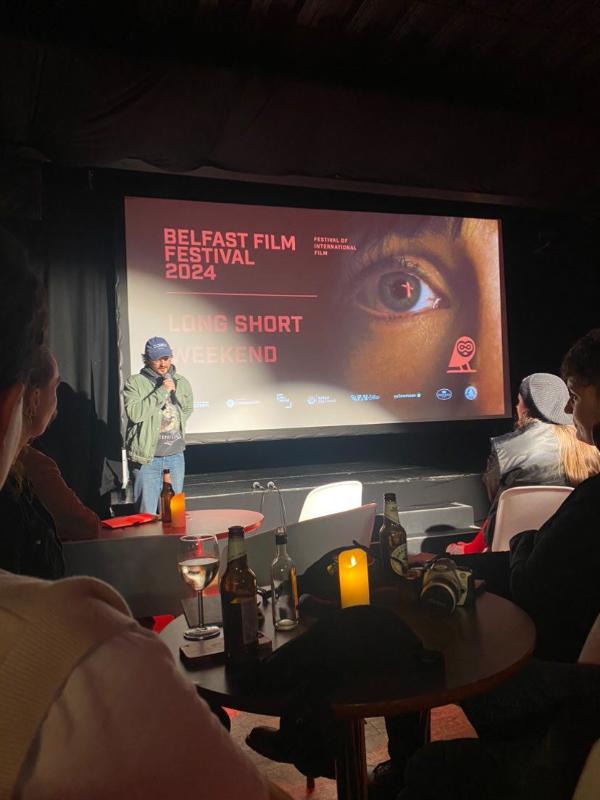
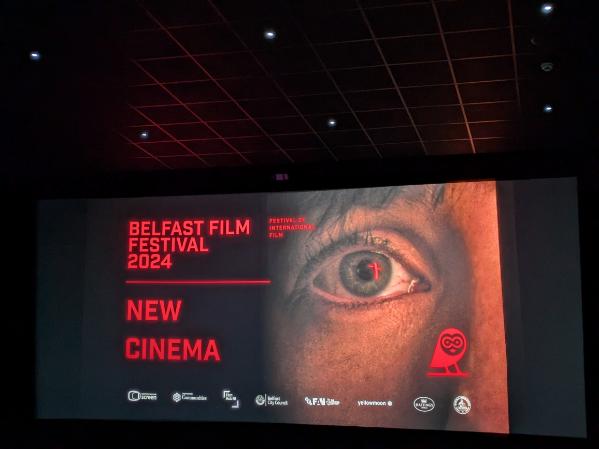
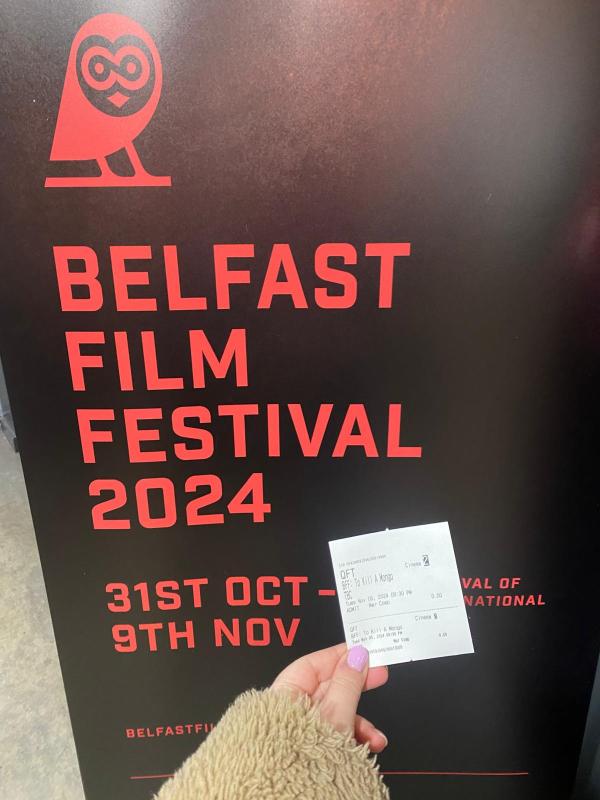
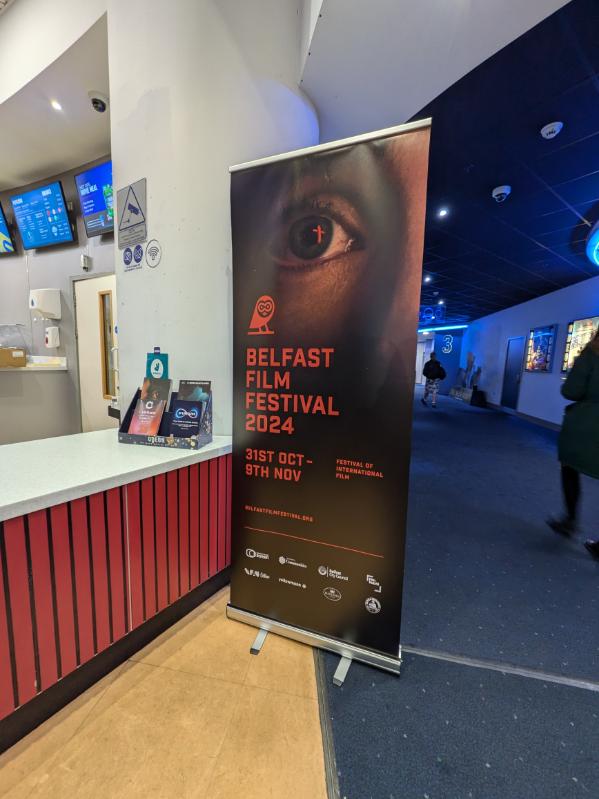
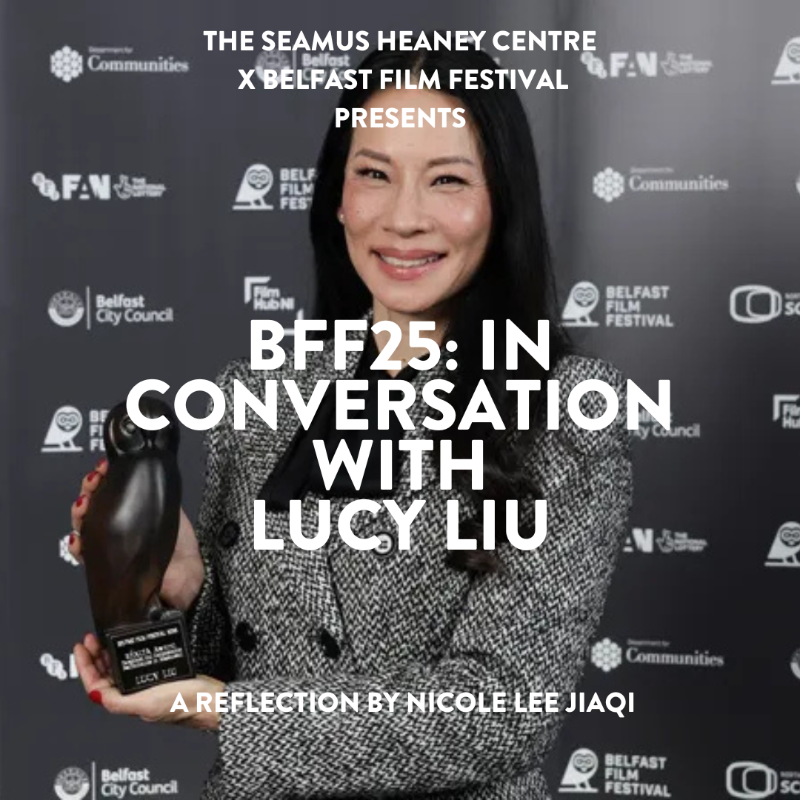
“The fact that you showed up tonight means a lot. Because without an audience, there is really nowhere to share your work.’’
And there I was— dark jeans and a black blazer, standing in the queue at Cineworld, the hushed anticipation of Lucy Liu in the air. I caught myself drifting— thinking too much until I found myself not realising I was thinking at all— of heritage. Was it Lucy’s Chinese roots that drew me here? Perhaps, yes, mingled with yuánfèn— that strange pull of fateful coincidence. I shouldn’t have been here, over a week too late to sign up. Yet, a ticket somehow found its way to me.
From Lucy’s early days playing guest characters to her memorable film debut in ‘Jerry Maguire’, Lucy’s talent, resilience, and relentless work ethic shone through, paving the way to her big breakthrough on ‘Ally McBeal’. Then, of course, came ‘Charlie’s Angels’, where she brought grace, intelligence, and power, cementing her place as a true Hollywood icon— and as a pioneer who showed that an Asian woman could, against all odds, rise and succeed in a predominantly white, male-dominated industry.
Lucy, however, didn’t forget her roots. All those awards— I shan’t leave out the Réalta Award presented at this year’s Belfast Film Festival for her performance in ‘Rosemead’— the applause, the bright lights— and she still mentioned her parents who: “did not have an easy time here. And I hope that my father, wherever he is in the spirit world, can rest without the difficulties that he had when he came to the United States.’’ I thought of my own father, who won’t be at my graduation. My mother and I joke about it— softening the truth of him growing too old for a flight, a life near-wholly sacrificed to send his Malaysian-Chinese daughter to pursue her dream of studying overseas.
Lucy’s words lingered long after she left. As I stood again in the cinema’s afterglow, I thought about the future, which was calling. That future self is writing this, and as I write this, the future still calls. I have very recently begun my career in film, thus, as Lucy acknowledged the audience with a “Thank you very much’’ filled with gratitude— I would, in turn, like to thank you too, Lucy, for walking ahead so that others like me could follow with, hopefully, as much courage and grace.
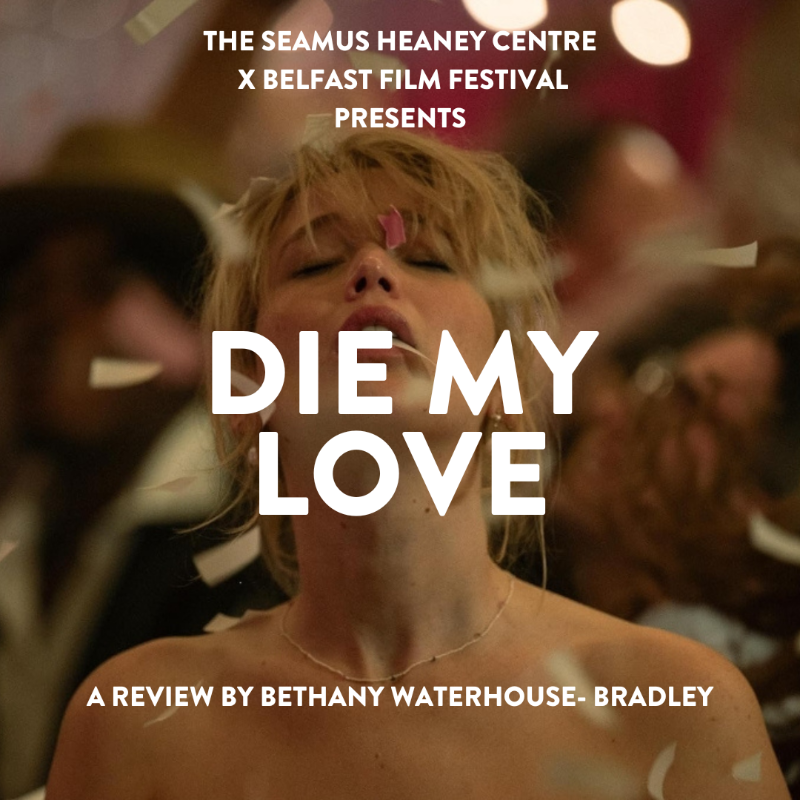
‘Die, My Love’ opens with Grace (Jennifer Lawrence) and Jackson (Robert Pattinson), a beautiful, young, couple emerging from the big city to have a baby in Jackson’s hometown. Cut to a raging forest fire, back and forth to violent, consensual sex – and it is clear this is not your usual babymoon.
This is an aesthetically stunning film. Uncanny, yet with natural effects, that add to the atmosphere and keep us guessing if we are witnessing actual events or visions conjured by a deteriorating psyche. Ramsey subverts audience expectations of the post-natal mother. Grace is often half dressed, literally crawling like a cat, driven by desire. It is interspliced with scenes of cooing and playing with baby in a way that tells the audience these things are not mutually exclusive.
Yet, these visually gorgeous scenes veered at times towards edgy for the sake of it. Beautiful threads get lost in noise, such as the affection Grace has for Jackson’s father and Grace’s struggle to find her way back to writing.
We are invited to see Grace and Jackson’s relationship as a passionate, volatile connection. But given that Pattinson’s Jackson is a caricature of a disengaged, frankly useless husband, it was little more than exhausting. I wanted more scenes with Grace and her mother-in-law, played with a subtle brilliance by Sissy Spacek. Their dynamic was grounded in mutual respect, rarely seen in popular culture.
Still, I gained I didn’t know I was desperate for: a film that instead of focusing on a new baby making a woman crazy, shines a bright, glaring light on how society uses motherhood to flatten women into a role. Through this lens, what reads as post-natal psychosis becomes Grace’s utter refusal to be turned into a two-dimensional character. I was reminded of Miranda July’s recent book All Fours:
“Without a child, I could dance across the sexism of my era…becoming a mother shoved my face right down into it.”
With ‘Die, My Love’, Ramsey shoves our collective faces down into it and holds us there for an hour and fifty-eight minutes.
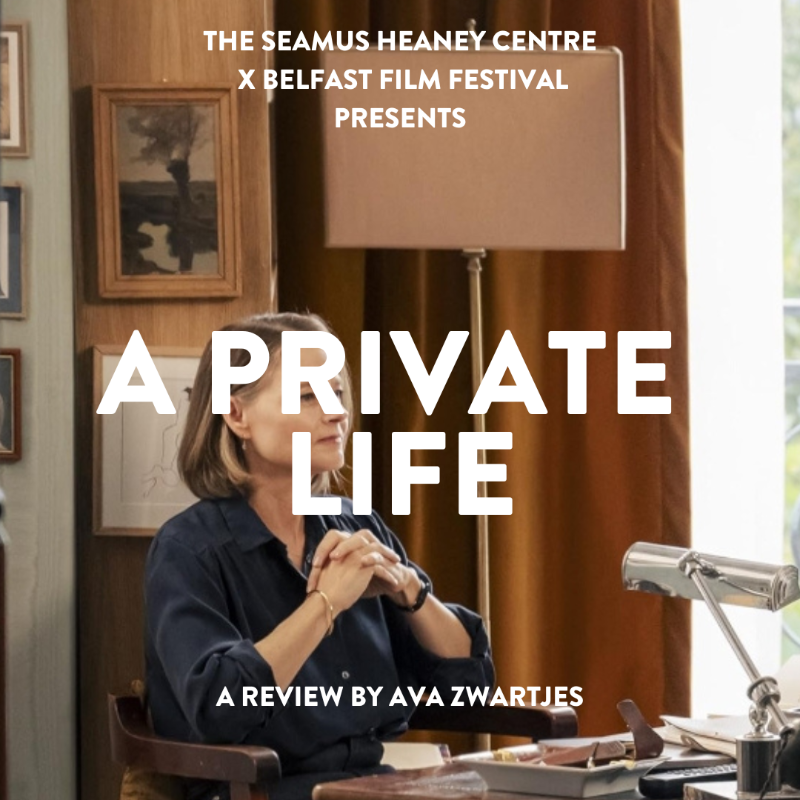
Grief is such a complex, consuming, profound emotion – or rather, affliction – that it makes you feel like you are losing your mind. Lilian Steiner can attest to this notion.
‘A Private Life’ is an acute depiction of grief as well as its habit of snowballing if neglected. Director and Screenwriter Zlotowski’s sharp, chaotic protagonist Lilian is a raw example of the difficulty of being truly vulnerable with others, but most importantly, yourself.
I found many aspects of this film engaging, but to me, the pace was at times inconsistent and the resolution slightly underwhelming. Nevertheless, these pitfalls were made up for by the rich character development and dynamics. The subplots in particular were riveting, reinforcing each character’s patterns of attachment and abandonment in the messy way that they manifest in real life.
The code-breaking relationships, dark humor, and facetious remarks, paired with a clever score and deliberate framing, came together to create a poignant commentary on truth, perception, and pain. There was an alluring blend of intimate, dark, hilarious, agonizing character interaction. I appreciated Lilian’s occupation as a psychiatrist as opposed to her personality traits; it’s a wonderful, powerful antithesis that highlighted gracefully the cognitive dissonance we exercise so often when it comes to vulnerability.
I have to mention, though, that the use of AI limited my enjoyment. It was slightly jarring to see fuzzy, almost sloppy animated flashbacks in contrast to the meticulous camera work that was utilized otherwise. Also, if you can understand French, there is an added layer of sarcasm and subtlety in the original dialogue that’s missed by the sometimes loose English translation.
This is something to turn on when you’re in the mood to get lost in someone else’s mess in an effort to escape your own. It is, however, at the cost of being left wondering how grief has found a way to weave itself into your own sphere. Lilian says, “je suis là.” I think we all should be.
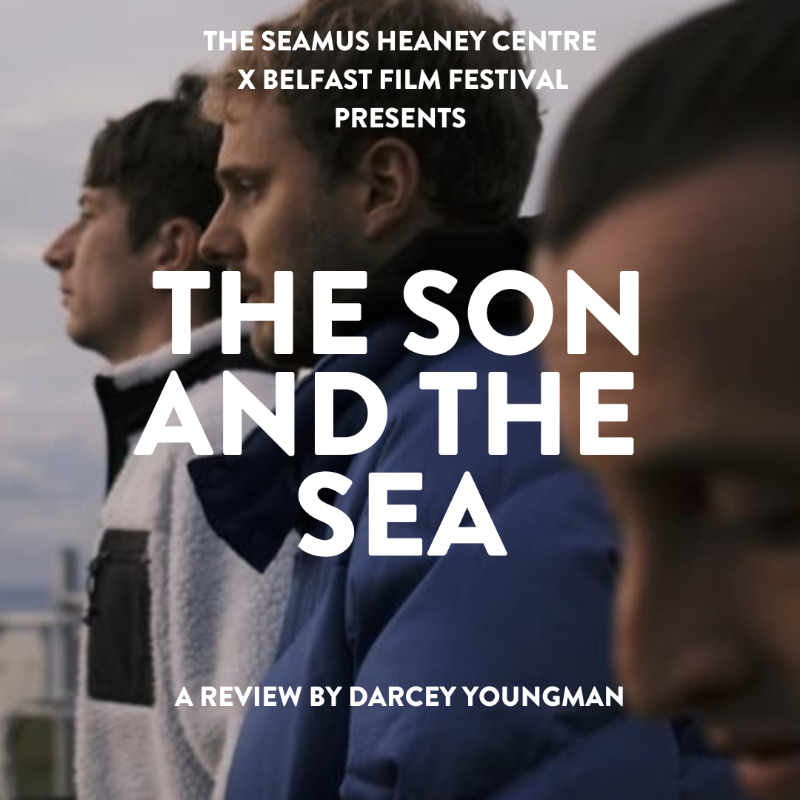
What is more healing than nature? It seems director Stroma Cairns answers this question decidedly with a heart-felt yes with her film, ‘The Son and The Sea.’
Set in the north coast of Scotland, in a town called Fraserburgh. The film centres around Jonah, a self-destructive Londoner, who escapes back to his roots, alongside filmmaker friend, Lee. What proceeds is a genuinely moving journey of overcoming repressed emotions, and isolation in a sea of loss.
What I found most intriguing was the film’s production context. After the screening, Stroma Cairns held a Q and A, and offered some insight. ‘The Son and The Sea’ was community-led, and only had one professionally trained actor, who played none of our main characters. This natural-documentary style allowed this breath of fresh air, a realness and truth.
The script was written by Cairns and her mother, Imogen West. Her brother, Jonah West, played our protagonist and his childhood best friend, Stanley Brock, played Lee. The line between fiction and reality might have been blurred by this fact, but Cairns offers this film as a masterclass on how to use our own experiences to create art.
One thing that left me thinking, however, was the secondary character story development. Charlie and Luke are twin brothers within the deaf community who live in Fraserburgh. Connor Tompkins as Charlie is truly a triumph, yet their storyline lacked answers. I thought that their story could be an entirely stand alone film, there was so much richness and conflict that could have been explored. Indeed finding out there's another story within the one you have created is not a bad thing at all. It’s motivation.
Despite this, I truly enjoyed the film and its heart. Jonah’s journey felt just, and satisfying, and I couldn’t help but laugh at the chemistry between the three characters, as they drive off into a sunset of unknowing, with the warming fact that they have each other.
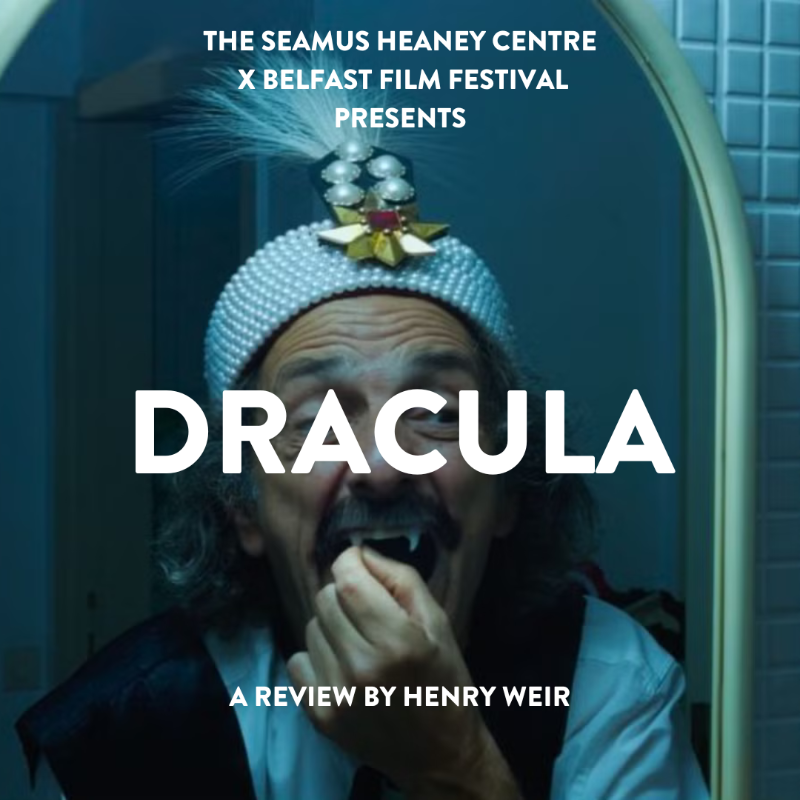
‘Dracula’ sucks – but I think that’s the point.
Dracula music video, Dracula silent comedy, vampire novel adaptation, tourist trap dinner show, male “enhancement” pills/Romanian tourism ad. The connective tissue that joins Radu Jude’s mishmash of sequences is a hack director who, looking to make something “commercial” with ease, impulsively generates the film’s hodgepodge sequences using AI.
Here the shotgun approach finds its satirical target, as what follows is an impressive array of deliberately bad filmmaking. Poor lighting and cinematography, obvious soundstages, stilted acting, cutouts instead of actors, narration not lining up with onscreen action, and a steady inclination towards peppering the plots with offbeat sex. Yet most importantly, there is frequent usage of AI generated footage; ugly, strange and often comedically inapt.
It felt like this exhaustiveness was designed to become exhausting, as it becomes increasingly obvious that the film’s aim is not comedy but trolling.
Constantly dragging away from the frame narrative, the film cuts to a fifty minute grating ‘Vampirul’ adaptation, cuts to AI-generated Vlad the Impaler TikTok, cuts to a field of penises– and in doing, cut me off from any investment in any level of the narrative.
Even the critical enjoyment of making meaning of the mess is dodged, as the film’s own critiques are subsumed to the wider reflexive meaninglessness of AI, which at one point generates its own hack capitalist critique. The joke isn’t that the film is “so bad it’s good” – it’s that the film is being watched at all, that anyone would engage in the calibre of “content” that AI, digesting and dissolving art and culture, produces: slop.
I can respect the aim of the “so bad it’s good commentary”, even if it results in a frustrating viewing experience. For all the initial appeal of the bizarre variety AI produces, it ultimately proves boring, frustrating, time-wasting. The constant flitting generation of content doesn’t make for rewarding entertainment; instead,
‘Dracula ‘is a draining experience. I’ll see myself out.
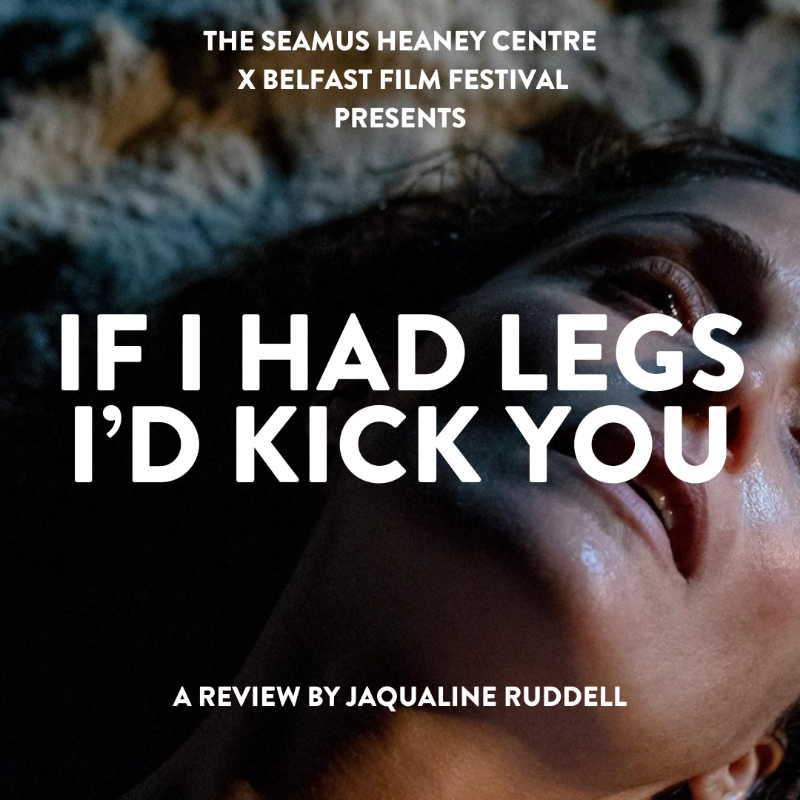
Halfway through the opening scene of ‘If I Had Legs, I’d Kick You’, I realised I was holding my breath as the extreme close-up of Linda’s face captured micro-expressions of pain, desperation, confusion, and loneliness.
Rose Byrne’s performance as Linda, a psychotherapist grappling with motherhood, carved its way into my psyche as I watched her being drawn into a relentless whirlpool of nightmare scenarios.
The film opens with a family therapy session, where Linda’s husband’s absence is felt poignantly; we hear the disembodied voice of her sick child telling the therapist that “Daddy is not stretchy like Mummy.” The child who has a mystery illness, which stops her from eating and means she requires a feeding tube, refers to her mummy as being like “putty.”
For me, “putty” is a powerful motif for motherhood: how far can putty or indeed a mother’s capabilities stretch before they snap? I keenly felt Linda’s desperation for clear answers from her evasive psychotherapist, played by the frustratingly brilliant Conan O’Brien. Linda’s unravelling coincides with her husband's lack of support and the system's rigid requirements for help with her daughter.
The film’s surreal elements, driven by Linda's drug and alcohol use and her declining mental state, had mixed effectiveness. However, some of the less convincing horror aspects were elevated by Byrne’s performance, alongside the striking cinematography, which created a vivid experience of motherhood resembling a Kafkaesque nightmare. The societal pressures on women to excel as caregivers while also balancing their careers underscored the absence of similar expectations for fathers.
The film ultimately left me extremely uncomfortable, with its ambiguous ending reflecting the narrative's complexities. For me, a tidy resolution would have undermined the darker aspects of motherhood that Byrne portrays so magnificently. ‘If I Had Legs I’d Kick You’ is a remarkable, emotionally devastating watch that I highly recommend, but do not wish to revisit any time soon.
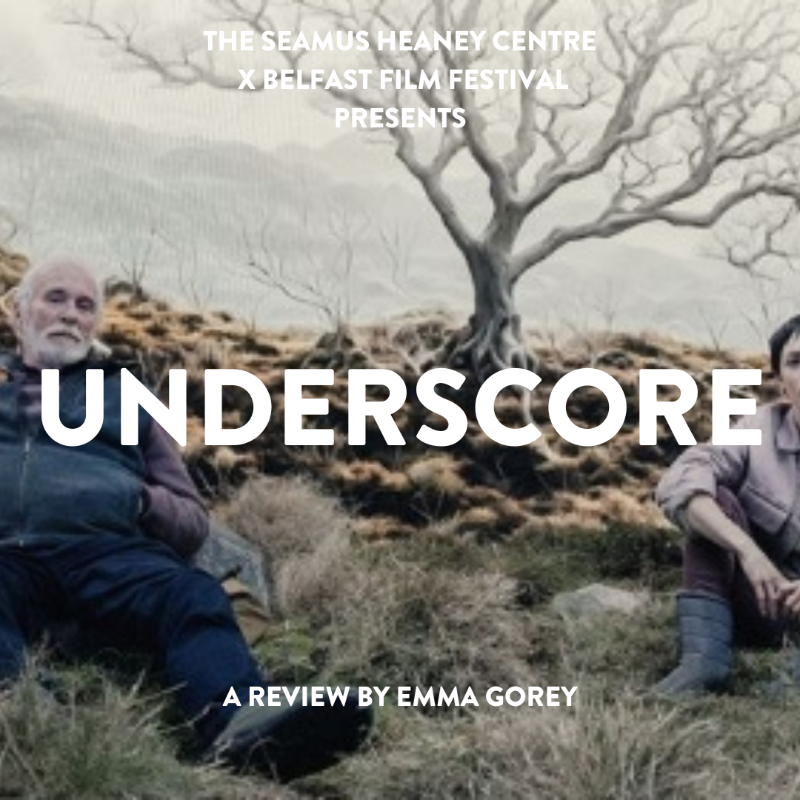
At the premiere of ‘Underscore’ at the Belfast Film Festival, director Hugh McGrory warned those in the audience of the meditative ‘trip’ that they were about to embark on. Little did I know of the exact journey this film would take me on, one that, despite being set in the surrounds of the city, reaches technological and ideological heights that surpass our locality.
The film follows a grandfather, Aodhán (Ian McElhinney), and his granddaughter Laoise (Jessica Reynolds), at the end of the world. The plot forces us to soak in the use of emerging technologies, which is what makes this film so unique.
As McGrory told us, this is not Mission Impossible 20 - ‘Underscore’s’ plot is sparse, its power being held in the intense visual and auditory journey it offers its audiences. Combining the use of the natural landscape surrounding Belfast with psychedelic non-human imagery, it’s hard to know where to focus one’s attention as the entire screen provokes an emotional response, whether from the rugged natural terrain, the moving performance of McElhinney and Reynolds, or the melting of the sky behind them.
Aodhán and Laoise’s belief that technology can indeed save them from the overpowering mushroom network (the outlandishness of which provides light comedic relief in a moment of seriousness) is all too familiar to a contemporary that crumbles at the thought of server failures and data breaches. The film, through the end of the world prompts us to consider issues that will be at the forefront of public conversation and private meditation in the coming years. ‘Underscore’ considers what may happen when those technological disasters are eventually embedded into our ecosystem.
‘Underscore’. aptly named for its incredible sound production and for the challenging moral problems it presents its audience through the immersive blend of sound and light, It also is the first film I’ve seen that credits the voice of ChatGPT, but I’m sure it won’t be the last.
Hugh McGrory has undoubtedly debuted the future of filmmaking with ‘Underscore’, and no better place to debut it than here in Northern Ireland.
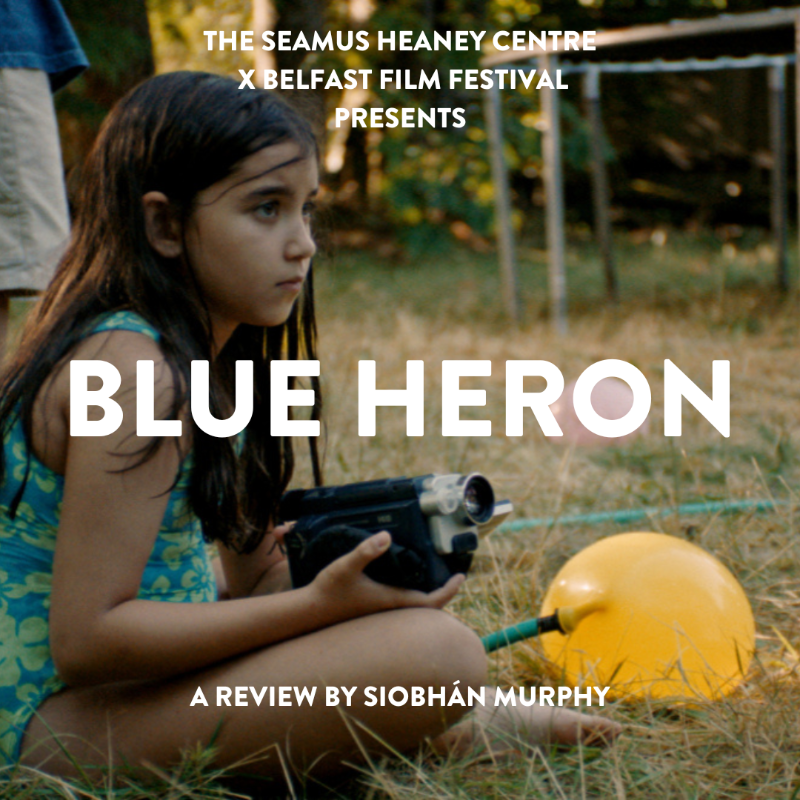
‘Blue Heron’ is billed as a study of 8-year-old Sasha's adjustment to her new Californian lifestyle after moving from Hungary with her family.
The film, however, seems a lot more focused on the impact Sasha’s unwell older brother has on her and the family. The second half of the film switches to following Sasha as an adult, who is seeking answers about the lack of support her brother received and attempts to make peace with her brother’s death.
The lyrical scenes of the film capture the beauty and headiness of the location, with a symbolic focus on animals and colours. The scenes from the past are warm and fleeting, clearly representing the sentimentality of childhood, while the scenes set in the present are sharp and clear, grounding us fully in Sasha's adulthood.
I think where the film struggled a little is that, while very well acted by all involved, I didn't feel I had a clear understanding of the relationship between Sasha and her older brother, Jeremy. As a child, Sasha seemed very distanced from, and cold towards her brother, but otherwise her life seemed fairly rich, with doting parents, and normal childhood problems. The camera lens often places the viewer in the position of looking out through Sasha’s eyes, from the outside of a room looking in at what her parents were going through, which perhaps prevented us further from understanding what Sasha was thinking and feeling about her brother. More attention to the moments between the two of them would have made her need for peace and closure more relatable in the latter half of the film. That said, I can appreciate that perhaps this was an intentional decision to show how Sasha felt sidelined in her family, it just didn’t quite work for me.
‘Blue Heron’ is an interesting and sad film, and certainly draws attention to the lack of social support and the impact of that on families in the 1990s—but it also draws parallels by showing that, even more than a quarter of a century later, there are still moral and ethical dilemmas, and a lack of answers, in supporting carers and family members with an unwell relative.
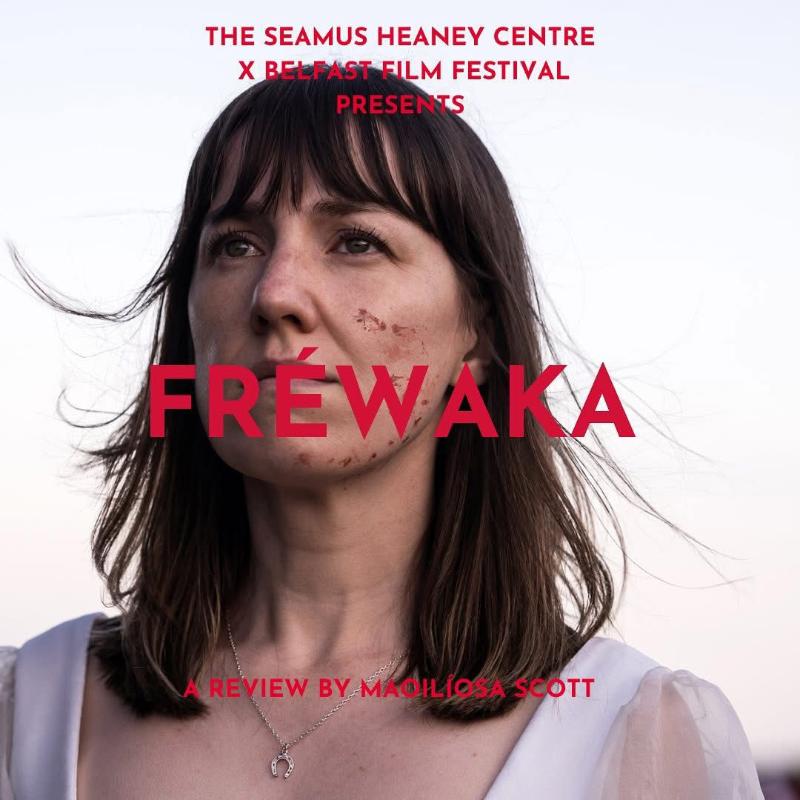
A highlight of Gaelscoil education was when they would pull all twenty-five of you into the biggest mobile classroom, lights dimmed, Murmers come in, with their creepy basket masks, to perform stories.
If there was an ideal audience for Fréwaka, it was me. Folk horror as Gaeilge, featuring a queer protagonist, and an unsettling amount of Catholic iconography: it’s hard to be objective about a film that’s everything you want a horror film to be.
Fréwaka is creepy. From start to finish. It doesn’t rely on jump scares or gore to illicit fear, instead, it’s filled with carefully considered lingering shots that invokes fear on anyone raised on a diet of folklore and religion will feel disturbed by. The red light in the mirror, the horseshoes on the door, the recurring motif of the black goat, the Murmers lurking in the window.
One of the final scenes, depicting a descent and ascent into their world, was an incredible piece of cinematography. It was unsettling and disturbing, because there was part of me that wanted to stay there, to see what the world had to offer.
But what really elevates Fréwaka is the relationship between the main characters. Siubhán (Shoo), arrives to take care of Peig, an elderly woman who recently had a stroke, and who is wary and paranoid of strangers coming into her home. As the film progresses, they grow closer, and this growing bond is what really allows us to care about the horrors the characters are facing.
There’s lightness and humour too. One scene shows two men speaking in Irish, assuming Siubhán won’t understand; a familiar experience for Irish speaking outsiders visiting the Gaeltacht.
Aislínn Clarke’s love for the genre and Irish folklore is apparent. The film feels authentic and familiar, the story told is hers, but it’s recognisable too. The horror in the film is never named, but we know who they are, and we know to be afraid of them. The film perfectly captures why even the most sceptical of Irish farmers will leave the hawthorn trees in the fields untouched.
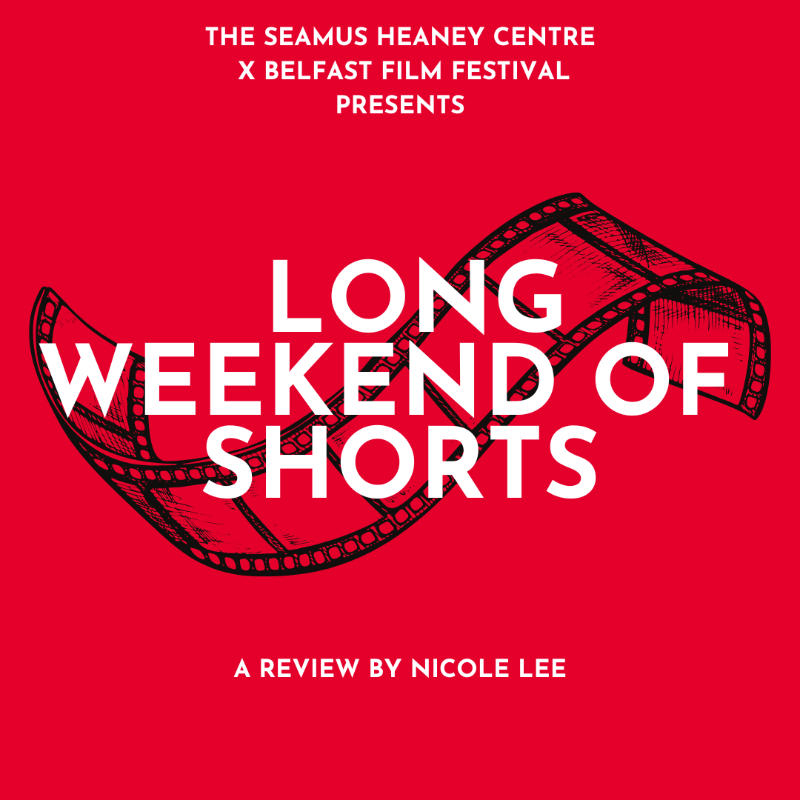
The Belfast Film Festival 2024’s Shorts Competition presented itself with an exciting array of short films coming from different perspectives, cultures and backgrounds. There were thirteen shorts in total, all of them being incredibly well written, directed and shot. After a whirlwind weekend, on Sunday, 3rd November, the winners and special mentions were announced.
The special mention for the Shorts Competition and LUMI Awards went to Die Bully Die by directors Nathan Lacey and Nick Lacey, and writers Matthew Backer and Drew Weston. The comedy horror short’s storyline consisted of Max having dinner with his former high-school bully, Adam, who picked on Max for being gay. The short had a lovely balance between gore, heartfelt dialogue and hilarious moments, while the storyline explored themes of trauma, and how the effects of bullying linger on into adulthood.
Farmers!? took the prize of the LUMI Awards. Directed by Freddie Leyden and co-written by Leyden and Clare Hoey, the short film depicts the lives of Irish farmers and that artists are often found in the most unexpected places, in the most unexpected people. After one of the farmers, who is also a singer, passes suddenly, his friends find it difficult to express their grief. After the funeral where they see his ghost, they release their emotions through a poignant group dance, using their bodies and the expressions of movement as a means of emotional response.
Last but certainly not least, Clodagh was the winner of the Shorts Competition. Director-writer Portia A. Buckley portrays a beautiful film about a woman, Mrs. Kelly, who works as a priest’s housekeeper and assistant, and how a young girl, Clodagh, breaks her rigid ideologies while igniting a spark from within through passion for dance. Once the class with Clodagh is over, Mrs. Kelly finds herself wavering, finally caving into what is considered a “sin” to allow Clodagh to join the dance class permanently. She goes against the church and her faith, forging Clodagh’s documents. She follows her heart and decides for herself what is the right thing to do.
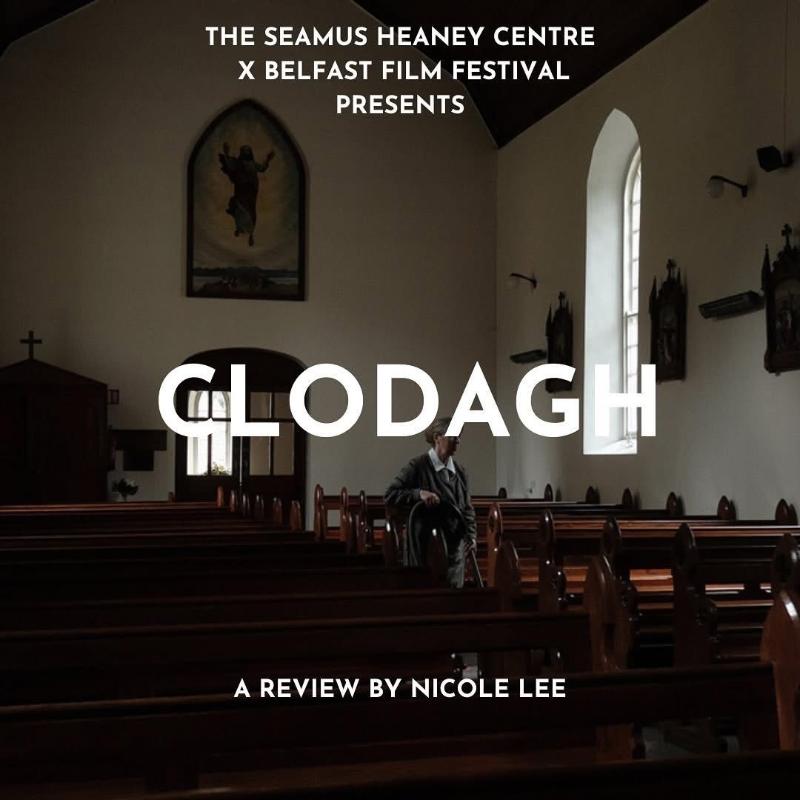
What is the line between right and wrong? Can what society perceives to be wrong, be right? These were the questions I found myself asking after watching the heartfelt short, Clodagh, written and directed by Portia A. Buckley.
Shot on film and set in rural Ireland, the short opened with a mood I can only describe as a mundane and lonely which wears one’s bones down. The story centres around Mrs. Kelly, a priest's old housekeeper and assistant. An uptight woman whose life revolves around structure, faith and the duties of a church.
I found it interesting that she runs a dance school, something which suggests quite a contrast to her personal, monotonous routine, adding dimension to her character. However, it was no surprise when Mrs. Kelly, at first, denies the entry of a new student, Clodagh, who wears colourful clothes and glittery makeup, because her paperwork isn’t done. But after some persuading, Mrs. Kelly caves in.
In class, Clodagh displays an extraordinary gift for Irish step dancing, making the fiddle player perform with the burning passion of an artist, something he had not felt in decades.
Clodagh is a symbol of what Mrs. Kelly is missing in her life. Mrs. Kelly realises this and wants to take Clodagh in as a permanent student but finds herself unable to break the rules to do so.
This internal turmoil kept me on the edge of my seat - the numerous telephone calls being shut down last minute, the frustration Mrs. Kelly faces because she must choose between old ideologies and what her heart truly yearns for, the glitter she wiped off Clodagh’s face still leaving its traces on her finger. In the end, Mrs. Kelly, unable to shake off her awakening, forges Clodagh’s documents, allowing her to become a permanent student. Finally, I could breathe. In the eyes of the church, a sin was committed. But from within the heart, a right has been done.
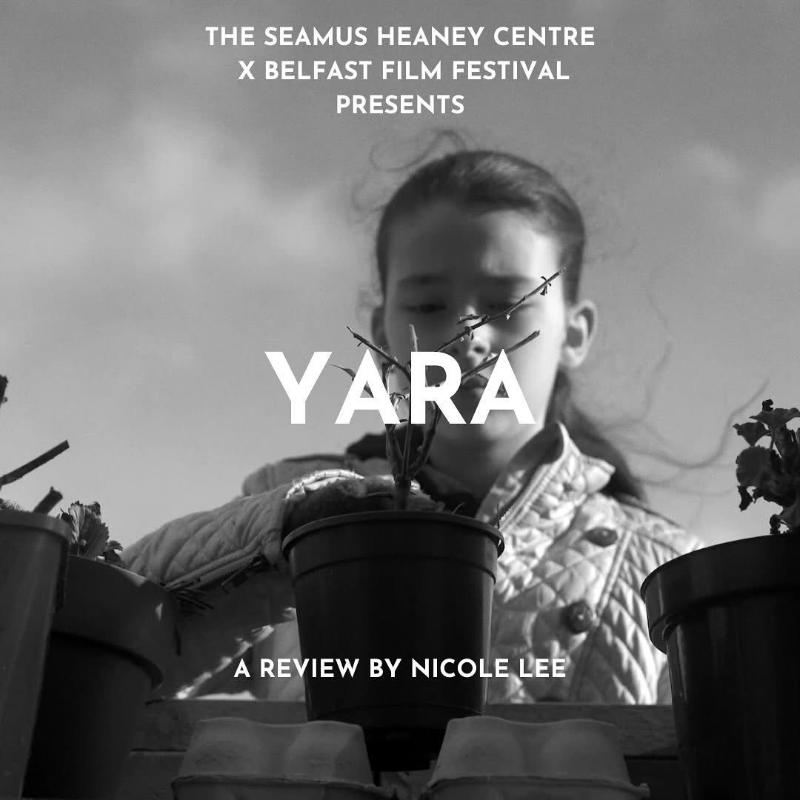
Blurry faces, haunting memories and a never-ending paranoia which consumes you. Written and directed by James Doherty, Yara is a poignant and painfully authentic short about Syrian refugees. The story revolves around a father struggling to adapt to his new life in rural Ireland while raising his daughter.
Shot in black-and-white, the medium evokes that the father is unable to move on from his past. He speaks about home throughout the short, “Home. Make it like home. Do you remember?”, decorating his house with the little belongings he has managed to bring from Syria. I found the most significant item being that of the dying potted plant, stripped of all its leaves. I thought of it as a reflection of the father, who has been stripped of his identity and down to his emotional core.
He has absolutely nothing left except for his daughter, Yara, the name meaning ‘little butterfly’. It adds depth to why the father is so frightened of losing her, just as how he has lost his wife. He is extremely protective of Yara, keeping her away from school and locking both himself and her inside the house.
I will never forget the many bone-chilling still images of bald trees being used. When Yara asks what has happened to her mother, the images come up rapidly and in a frenzy, almost as though they are flashes of memories the father finds difficult to process. This is further amplified by the still images of blurred faces of Syrian women who, from what I believe, were either lost during the war or during the journey to find peace and freedom. I was struck by how this was depicted because of the accuracy of it all. Refugees are reduced to numbers. They become nameless; their faces forgotten by society. Much that’s left of them are the hazy snapshots from the memories of those who have survived. Yara explores the heartbreaking nightmare experienced by refugees.
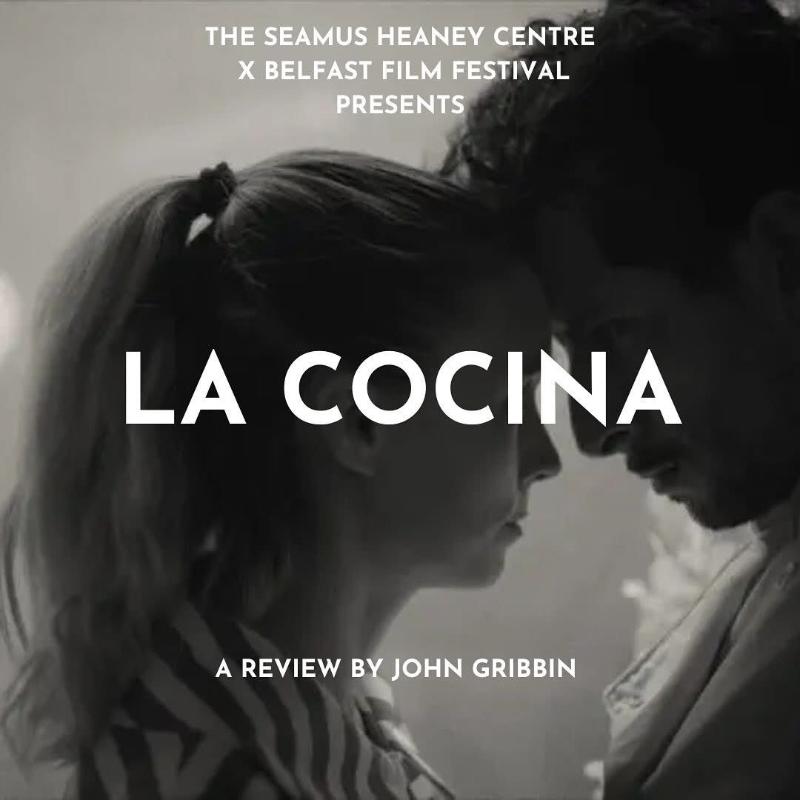
La Cocina was something of an onslaught on the senses. The sound settings were loud, there was constant activity and noise, the colour palette consisted of shades of black, white and grey, and the story was an unrelenting spiral into chaos and despair.
Okay, so having got that off my chest, I have to say that this was also a really beautiful film in many ways. It depicts the world of a restaurant kitchen, staffed almost entirely by immigrants, most of whom are illegal. The film opens with a young Mexican woman getting off the boat in Manhattan and finding her way to the restaurant, in hopes Pedro (Raul Briones) will give her a job. Pedro turns out to be the real protagonist of the film. He is in love with Julia (Rooney Mara), she becomes pregnant with his child. Pedro provides money for her to have an abortion, shortly after we learn $800 has gone missing from last night’s till. An investigation begins.
There is a long, tender scene between the two lovers in the meat safe, cold comforts perhaps, the only place they can escape the endless cacophony of the kitchen.
Although the relationship between Pedro and Julia is the heart of the film, its soul is in the plight of all the staff, illegal immigrants doomed to work in inhumane conditions for extensive hours. The inhumanity is heightened through long shots of people moving through cavernous, labyrinthine corridors, chefs screaming at his workers, fights between fellow workers, broken machinery, floods and rats in the garbage in the back alley.
The miracle is that even in this hellhole - this underground babel where people threaten, joke, taunt, cajole and seduce in multiple languages - the immigrants are shown to be heart-breakingly human- individual, talented, quirky, aspirational, clever, witty and compassionate. La Cocina is made for the USA of today when immigrants will be under greater pressure than ever, especially following the recent election.

I don’t watch a lot of surrealism, but when I saw the blurb of Rumours, not to mention the cast, I had to see it. World leaders meet at the G7, hosted by Germany, with the goal of drafting a preliminary statement on an unexplained “crisis”. However, their unimpressive efforts are constantly disrupted by “bog zombies”, eerie fog, a giant brain, and most of all, by themselves.
The G7 leaders take cues from their real-world counterparts past and present, from Charles Dance’s dozing, confused President of the USA to Roy Dupuis’ emotionally volatile President of Canada. Cate Blanchett really shines as the German Chancellor, who fails at every opportunity to take the situation seriously. I would have loved to have seen more of Takehiro Hira’s Prime Minister of Japan as, although perhaps a bit side-lined in the story, his performance brought a real genuineness of reaction that sold the surreal situation.
One thing that really struck me about the film was the choices around set and sound. At the start of the movie, we are greeted with over-saturated, almost sickly bright colours, in a nod to the unreal world of the elite. However, as they flee into the forest, we enter a mysterious, foggy landscape where bog zombies carry out creepy rituals around the fire in a genuinely disturbing horror sequence.
The film isn’t afraid to lean into the cliché when it suits it either. Romantic dalliances between Germany and Canada are backlit in gentle pink and soft music. Meanwhile, in a scene that had the whole audience laughing, sorrowful Titanic-esque music plays and the camera lingers on the actors’ faces as the party is split, while some wade into the river to try to find the ferry.
This isn’t a film that will give you all the answers, we’ll never know why the President of the USA had a British accent the whole time. But, by the end, we don’t care. The absurd is effortlessly used to comment on the state of our current society, and, with last Wednesday’s election results, the satire hits closer than ever.
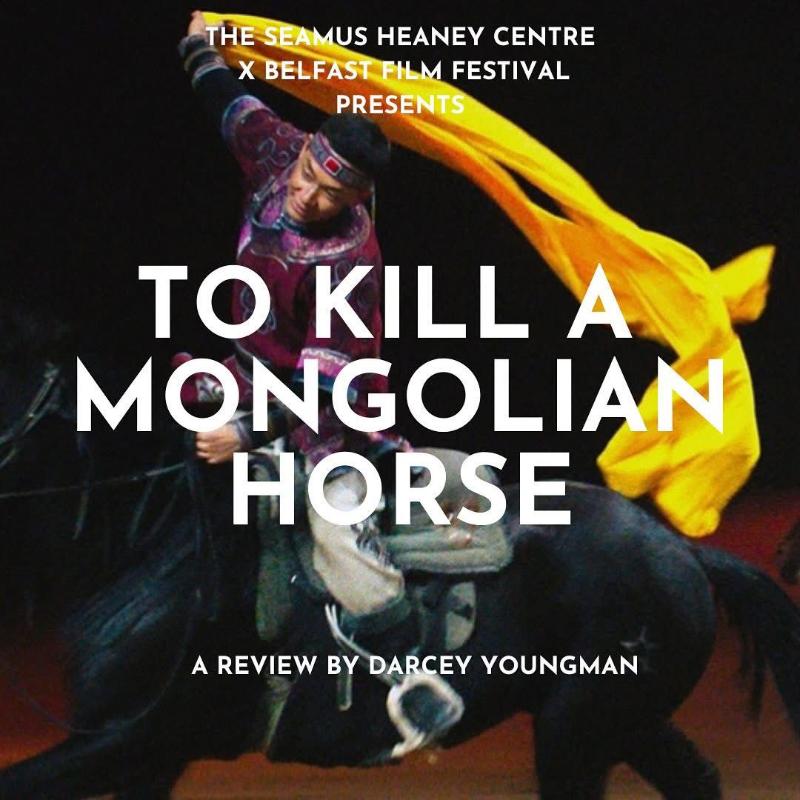
Jiang XiaoXuan’s To Kill a Mongolian Horse is sentimental, and beautiful, yet takes us through feelings of pain and loss, as we watch a culture slowly strip away.
Our protagonist, Saina, the actor's name also being Saina, and one of Jiang’s off-screen friends, is constantly battling with adhering to the tourism of his culture, fighting to keep afloat in a capitalist world, all while caring for his young son, and alcoholic father.
The film is cinematic. It uses long, establishing shots to showcase the landscape. The dry, desert- like scenery, an unkempt land reflecting that of its culture. Saina’s journey is ultimately to lose everything. His sheep, his job, his language, his family, and then his land. However, he holds on to one thing; his horse. Despite the horse's age, that it isn’t winning races nor bringing in money, Saina desperately holds onto it. The horse seemingly is given up, not wanting to leave the stable, not interacting with the other younger horses, and only responding to Saina.
To Kill a Mongolian Horse is about not the killing of a literal horse, but the killing, the wiping out of an indigenous culture. The ending sequence where Saina rides his horse through a road of traffic, drinking alcohol, showcases an end, a reluctant submission, trying to ride away, when he is surrounded by the modern world.
The context more widely of the film is that its funding is from all different Asian countries. Due to strict and rather tedious censorship rules in China, a film like this can be seen to break these regulations. It’s critical, critical of the loss of indigenous cultures, critical of using differing cultures for entertainment purposes. It is not bold, but it is effective, and emotional. Leaving us with a bitter taste in our mouths. That the only way to keep indigenous cultures alive is to make a spectacle of them.
To Kill a Mongolian Horse is silent, yet significant, becoming a film that dares to critique China’s treatment of Mongolian culture and its censorship laws.
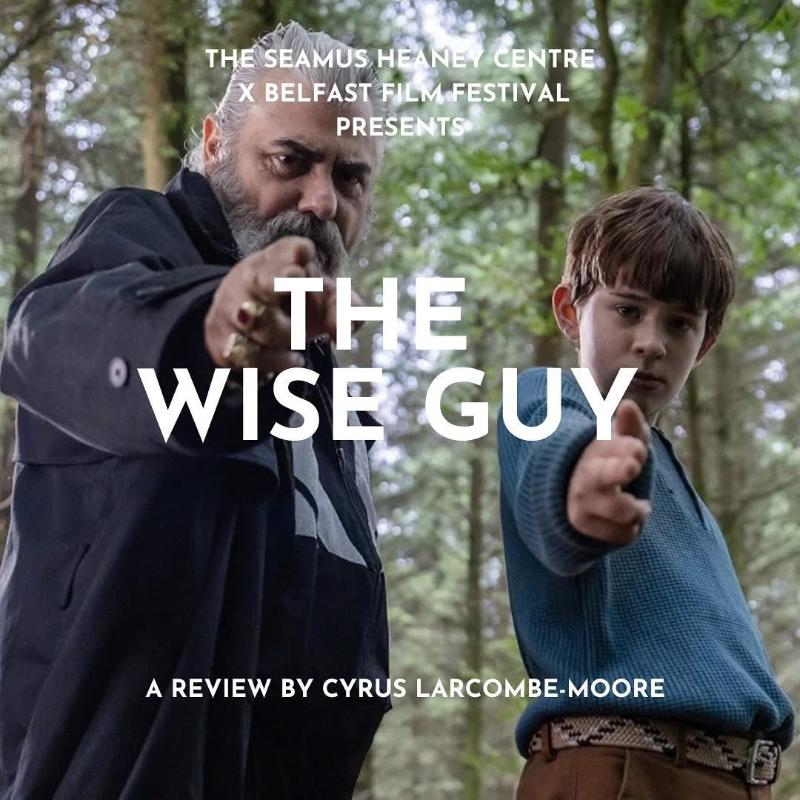
The cliché rings true; on the final night, there’s always a buzz. And like a swarm of excitement, we fill the cinema. Every faux-leather red chair holds another person murmuring about The Wise Guy, Belfast, and each other’s outfits. I even catch a whisper from the seat in front: “I’m working with them on my next project.”
Belfast’s award-winning production company Out of Orbit presents The Wise Guy, the debut feature film of writer and director Sam O’Mahoney. The Wise Guy is a story about Francis (Senan Jennings), an eleven-year-old atheist caught between his parents, a Christian classroom, and his own restless imagination. Spending weekends at his dad’s new girlfriend’s home by the woods, Francis is adrift—until a chance encounter with an American gangster (Darrel D’Silva). Still on the festival circuit, this shoestring-budget Belfast film was chosen for the closing gala of the 24th Belfast Film Festival for good reason.
The film itself is an impressive feat. Shot in just 18 days, The Wise Guy is a testament to the drive and dedication of its debutants, as it was a debut not only for its director but also for the director of photography and the editor. The film’s polish belies its short schedule, a product of meticulous shot planning. This is without mentioning that our protagonist is played by a 13-year-old who could only shoot three and a half hours a day. His performance is a stand-out, capturing the camera effortlessly.
Early in the film, O’Mahoney gives us his thesis: “Embrace what’s real, it’s beautiful.” The motto is scrawled on a poster by Francis’s father (Paul Mallon) and nailed to a telegraph pole in defiance of a Christian slogan. It is a tension looming throughout for Francis, one of finding identity in the throes of approaching teenagerhood. It is the kind of tension found in so many coming-of-age films, a reflection, of course, of a filmmaker’s own desire to grow into their craft. But Sam O’Mahoney has brought such earnest wit and charm to the screen that this film deserves nothing more, just like Francis, than to find a home.
